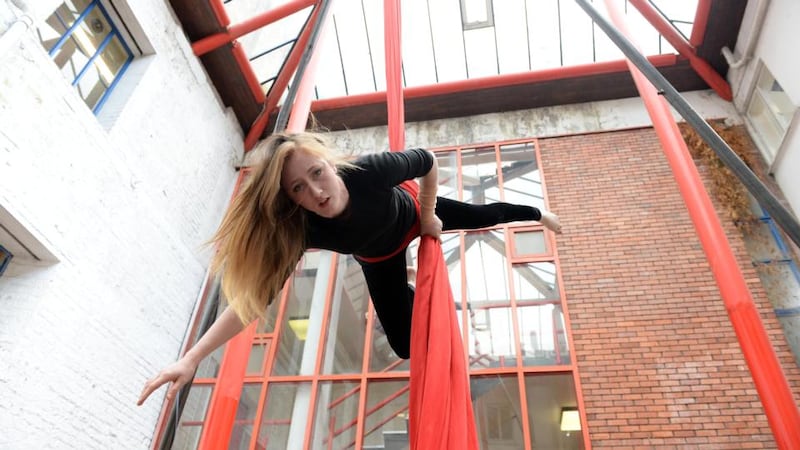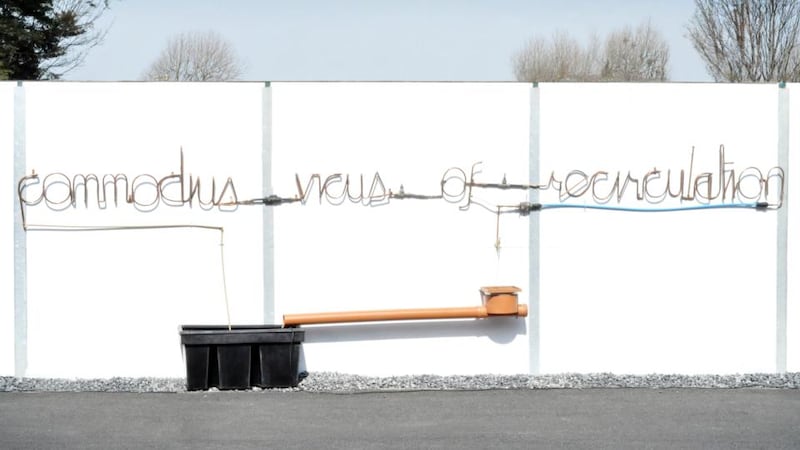NCAD
Thomas Street, Dublin. Until June 21st
DIT fine art and design graduates


Dublin School of Creative Arts, Grangegorman, Dublin. Until June 13th
The Photography Graduate Exhibition
National Photographic Archive, Dublin. Until June 28th
IADT Art Graduate Exhibition
Kill Avenue Campus, Dublin
This year’s season of fine-art degree shows kicked off with a frisson of controversy. There were rumours that, following a season of student protests and unrest at NCAD, one prospective graduate proposed exhibiting a satirical, emperor’s-new-clothes likeness of the college director, Declan McGonagle.
In the event no such likeness was evident, but disarray surrounded what should have been the show’s preview on June 8th. It became apparent that the relatively few who attended did so on the basis of informal invitations from staff members. No formal notification or invitations had materialised.
To the dismay of many of the students in attendance, corporate buyers and other interested parties who usually attend the preview were not there, presumably because they had not been invited. It was not clear if or what efforts were being made to rectify the situation before the official opening, but student disquiet persists as NCAD struggles with funding and other difficulties, even as student numbers increase and staff numbers decline.
NCAD has embarked on a “strategic alliance” with UCD after the dissolution of the NUI, which had awarded degrees at the college.
IADT retains independence
Despite much talk of potential mergers in the institute of technology sector, IADT retains its independence under the IT umbrella. Its president, Dr Annie Doona, says she is very happy to do so and, judging by this year's fine-art and photography shows, is managing very well. That's not to mention the more commercially focused areas in which IADT has a proven record. She points out that the school has opted to simplify the traditional, outmoded distinctions within the fine arts by using just one word: art.
Its sister institution, DIT's Dublin School of Creative Arts, with Kieran Corcoran at the helm, pioneers occupancy of the extensive new Grangegorman Campus. The campus is a work in progress, still mostly empty space – but impressive empty space: swathes of open land dotted with refurbished and brand new buildings, usefully close to the city centre.
DIT's graduation show was titled, optimistically, Lift Off, a slight overstatement, but justified given the general mood of burgeoning self-confidence and the site's undoubted potential. A core element of the strategy seems to be the provision of generous and flexible workshop facilities.
You might expect that the rising generation of artists would be plugged in to the digital age and that traditional art forms would become a thing of the past in the flight to proliferating virtual worlds and cloud communications. While graduates show every sign of being technologically literate, that is not quite true. More than one lecturer at each venue commented on “a return to the material”. You could take that literally, as fabric was prominent in every exhibition, but really it means a return to making physical things, be they three-dimensional sculptural forms or two-dimensional images, drawn or painted.
There were painters of note at all three shows. For example, at IADT, Ciara Roche's paintings of domestic terrain, mostly by night, were very accomplished, recalling Eithne Jordan and Mairéad Ó hEocha. At NCAD, Ciarán Doyle's amalgams of photographs, drawings and paintings of anomalous urban spaces, utilitarian, contingent and shabby, but oddly beautiful, also stood out. In a similar low key, Jenny Wood Sullivan at DIT made considered studies of found objects, from scraps of functional objects to fallen birds, an archaeology of the streets.
Of the material artists, among the standouts was Róisín Cash at IADT, whose fabric sculptures relished the play between rigid and free-flowing forms and used colour and light very effectively. Still with material but moving beyond fabric, Maria Quigley's Commodius vicus of recirculation at DIT enlisted Joyce in an impressively achieved plumbing installation employing the bits of the water distribution network that are being replaced by water meters as well as many metres of copper pipe.
It was, incidentally, one of many sculptural pieces in all three shows that looked to the construction industry.
NCAD's MFA show has been a moveable feast in recent years. This year it is close to the campus, just across the road in the vacated Frawley's building. The show is called Frawley's Special in deference to the shop's local significance. The venue is wonderfully evocative. From the polished lino floor tiles to the cash desk, remnants of the building's past seep into the present. As the MFA coordinator Sarah Durcan puts it: "We were determined to avoid turning the space into a white cube."
Dispersed over two storeys, there is a group of very capable and very diverse painters and one fine printer, Iraqi-born Hussein Abbas Al-Tai, whose work, with its sonorous deep blacks, deserves a careful look. Also worth seeking out are David Balfe’s moody and atmospheric black-and-white film, and Ella Bertilsson’s installation. You could almost miss the latter as it presents itself as a pair of solid, right-angled walls built from packing crates and various domestic objects.
She had in mind the self-storage depots that have become a part of modern life. Go into the space and you find yourself listening to three short audio narratives. They share the idea of someone who is looking for something that, for whatever reason, cannot be found. It is a particularly good installation that will surely be reconfigured at other venues in the future.










